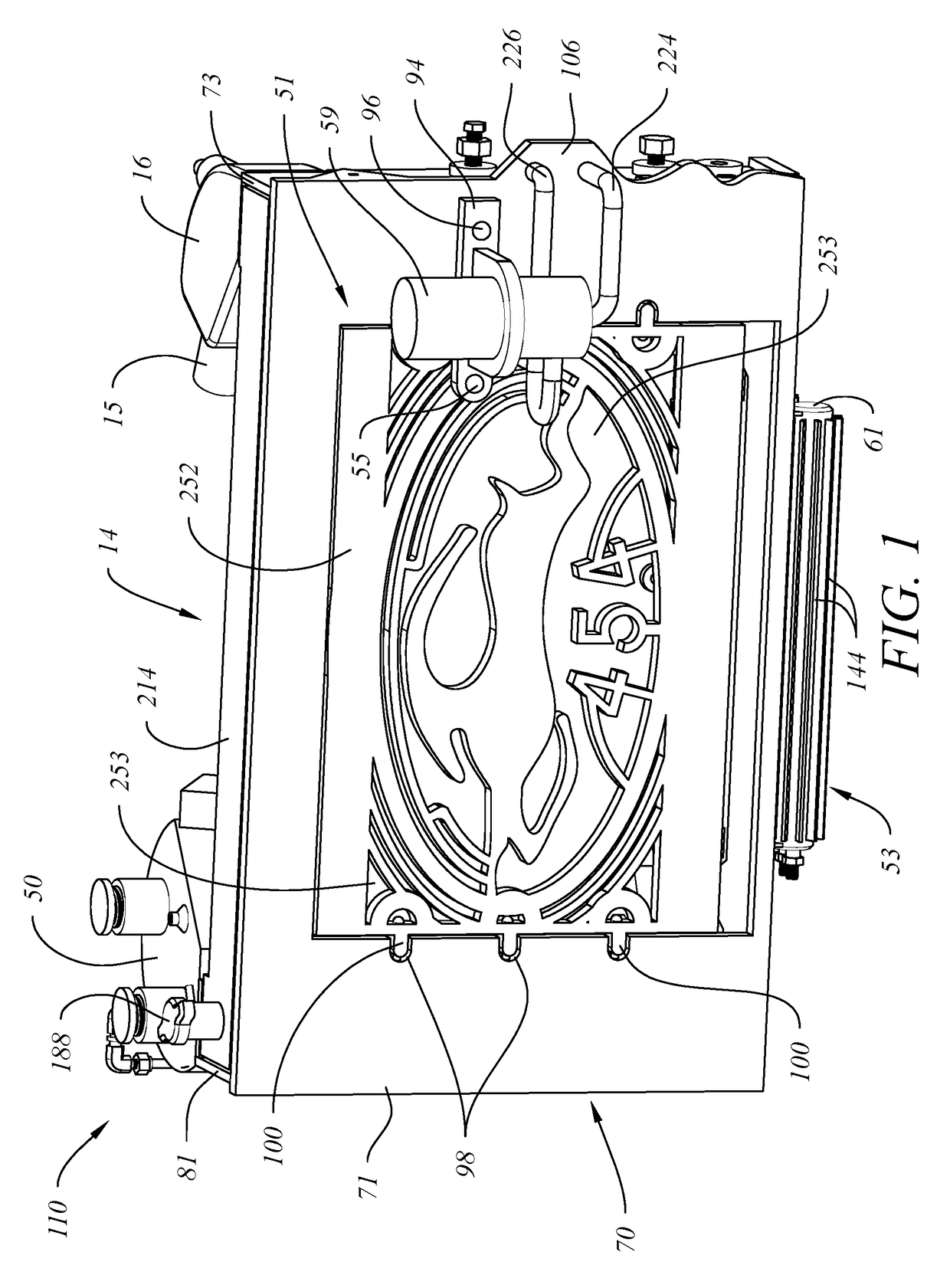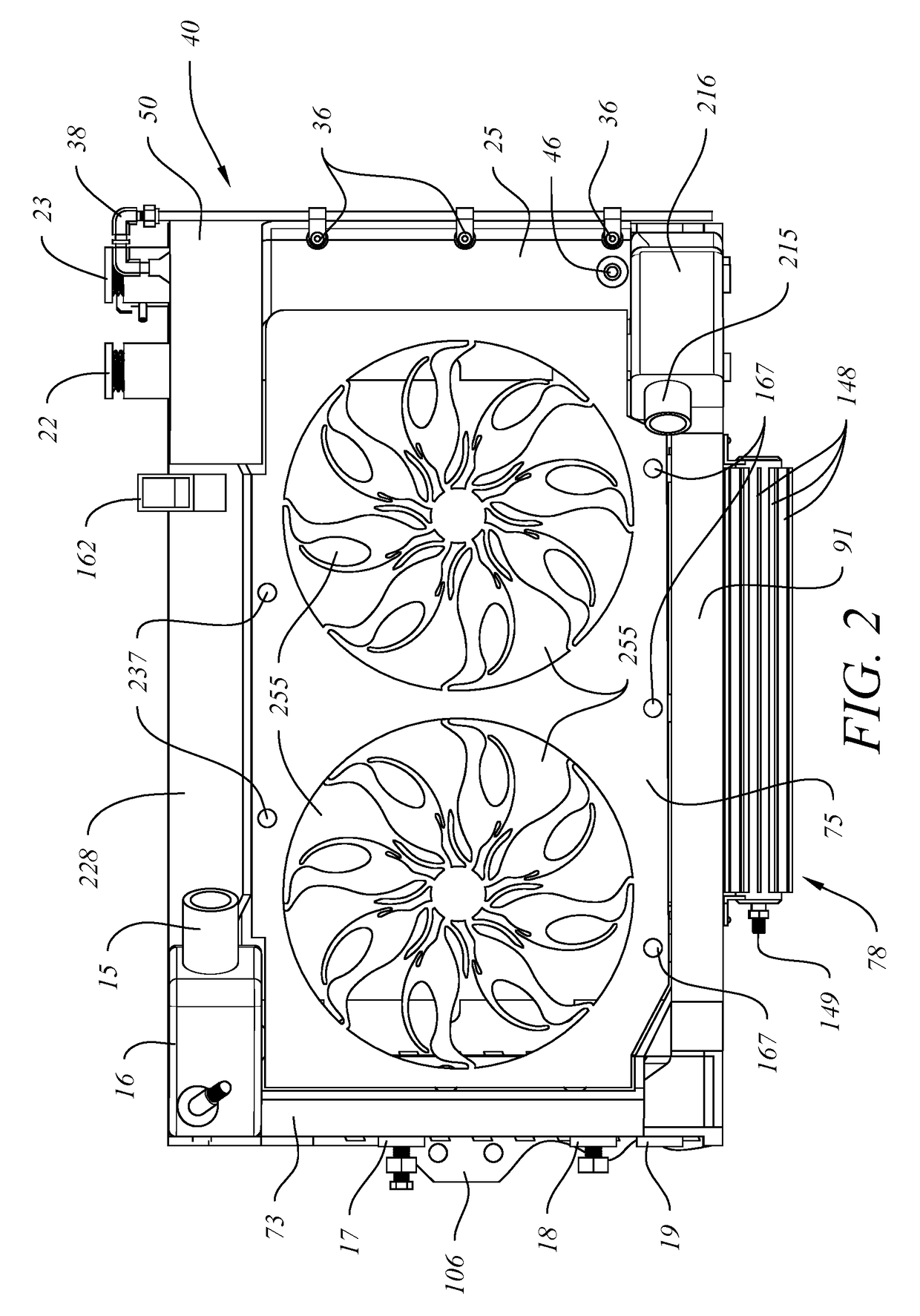Radiator System
a radiator and radiator technology, applied in the direction of machines/engines, liquid fuel engines, transportation and packaging, etc., can solve the problems of radiator failure, radiator failure, radiator failure, etc., to improve structural integrity, reduce the likelihood of failure, the effect of reducing the likelihood of failur
- Summary
- Abstract
- Description
- Claims
- Application Information
AI Technical Summary
Benefits of technology
Problems solved by technology
Method used
Image
Examples
Embodiment Construction
[0034]Referring to FIGS. 1-11, a preferred embodiment for radiator system 110 is shown. Radiator system 110 preferably comprises a mounting frame 70, decorative front grill 51, external transmission cooler 53, internal transmission cooling tube 34, external power steering / hydro brake cooling system 78, power steering / hydro-boost brake system reservoir 59, rear grill 75, self-circulating cooling system 20, a windshield wiper reservoir system 41, an internal fan system, a right heat exchange core tank 80, a left heat exchange core tank 82, upper shroud 14, a frame mounting system, and an optional secondary coolant pump system 151 (shown in FIGS. 12-14). Radiator system 110 also preferably comprises a control system to activate fans and optional coolant pumps, open and close valves, and send and receive signals and data based on sensor measurements, such as coolant temperature.
[0035]Referring to FIGS. 1-3, mounting frame 70 comprises a substantially rectangular front body 71 with a cen...
PUM
 Login to View More
Login to View More Abstract
Description
Claims
Application Information
 Login to View More
Login to View More - R&D
- Intellectual Property
- Life Sciences
- Materials
- Tech Scout
- Unparalleled Data Quality
- Higher Quality Content
- 60% Fewer Hallucinations
Browse by: Latest US Patents, China's latest patents, Technical Efficacy Thesaurus, Application Domain, Technology Topic, Popular Technical Reports.
© 2025 PatSnap. All rights reserved.Legal|Privacy policy|Modern Slavery Act Transparency Statement|Sitemap|About US| Contact US: help@patsnap.com



